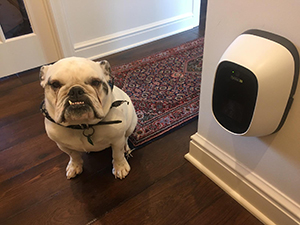Have you wished that your dog could talk and communicate with you directly? You know, sometimes it’s not difficult to understand their thoughts based on their actions. Debra Horwitz, the leader editor of Decoding Your Dog, mentioned that we should look at the whole dog, instead of a portion of him/her. His face, body, and tail tells you how he feels relaxed, excited, upset, and aggressive. People look comfortable when they are happy, and this method works for dogs as well. When you notice that your dog looks soft and wags his/her tail, then, the tail wags his/her whole body, this means your dog is under a happy and comfortable condition. Sometimes we see that our dog tear up furniture when we are not home. Most time, this is a way to tell you he/she does not want to be alone. Anxiety is a passive attitude to express that dogs need more attention or exercise.
For each family, every dog is special and a majority of dog owners believe that their dogs know what they are talking about. Several studies have confirmed that there are some shortcuts for training a new puppy to follow what you are saying.
- Try to use a higher pitch in our voices and use “dog-directed speech” while talking to our dogs. Dog-directed speech means that we change our sentences’ structure, such as shorten and simplify phases. Dogs will pay more attention to owners if they use dog-directed speech.

- Dogs may not trust you when you are angry. Ross Flom, a psychology professor at Brigham Young University did a related research about how dogs use people’s emotional cues. His research team observed how dogs reacted to people while having gesture with different facial expression and vocal tone. For the positive expressions, there was no obvious or special reaction; however, it took longer for dogs to react if they saw negative expressions. Life can be hard, but just take it easy while playing or training with your puppy!

- Feed your puppy on a schedule. Depending on dogs’ age, puppies may need to be fed three or four times per day. Feeding them at a similar time will make housetraining easier for both dogs and owners.

Using these simple tips, you will be talking and training your dog in no time. If you stay patience and have fun, your dog will be your new best friend.
